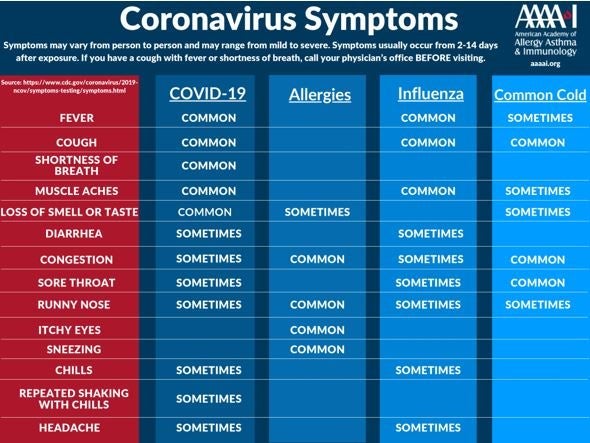Dr. Kristy Semenza, Allergist & Immunologist, Breaks Down Spring Sniffle Symptoms: COVID, Flu, Allergies, or a Cold?
May 10, 2022Categories: Bassett News
Tags: Bassett News
 As much as we may enjoy the rising temperatures, budding trees, and blooming flowers of spring, it can also bring congestion. And, as spring brings congestion, congestion brings a mystery.
As much as we may enjoy the rising temperatures, budding trees, and blooming flowers of spring, it can also bring congestion. And, as spring brings congestion, congestion brings a mystery.
This mystery seems impossible to tease out—the possible causes of a new stuffy nose seem endless! But figuring is important. By tracking symptoms and recognizing an infection early, you will be more successful in managing your discomfort and less likely to spread it, if it is a contagious disease.
The Usual (and Unusual) Suspects
Let's start with allergies. This time of year, the cold weather is thawing and the first pollens are making their appearance. But it isn't quite right to all this "allergy season." Instead, we experience a series of overlapping allergy seasons. Spring brings tree pollination. It is followed by grass pollination in early summer. Late summer and fall are notable for weed pollination. And finally, the dampness of late fall takes us into mold season.
Spring also brings changes in humidity, temperature, and atmospheric pressure. All of these can contribute to increased headaches, migraines, sinus pressure, congestion, nasal drainage, sore throat, or respiratory symptoms like wheezing, coughing, or shortness of breath.
And then, of course, there's actual viral illness. Allergy and weather-related symptoms often overlap with those of our old standbys, cold and influenza. Adding COVID-19 viral variants to the mix has only further complicated things—especially since each variant has its own, modified spectrum of symptoms. It is dizzying!
Following the Clues
Cold, flu, allergies, and COVID-19 are each treated differently.
That's why it is vital to discuss your symptoms with your primary care provider, working together to find the best management strategies. But here are some tips that can help you get started:
- Download a phone app that provides "pollen alerts" on days expected to have a higher pollen burden based on weather or time of year. Many weather websites have this feature as well.
- You can set up phone alerts on the American Academy of Allergy, Asthma, and Immunology (AAAAI) website.
- If you wake up with symptoms in the morning, but they seem to get better as you go about the day, this may be a sign of allergies.
- Controlling and avoiding your trigger allergens is the most important step! Continued exposure means continued symptoms.
- Keep windows closed during the day, especially on high pollen days.
- Many helpful oral, nasal, and eye allergy medications are available over-the-counter. Work with your health care provider to determine which may be the best fit for you.
- If you use a medication nasal spray, prepare the nasal mucosa. First, wash out your nose with a saline nasal spray or nasal wash. Then gently blow your nose. This makes your nose ready to have the medication applied—like washing a car before waxing it!
- The common natural remedy of a daily teaspoon of local honey has not been shown to treat allergies.
- Try wearing a mask or eye protection during lawn work or gardening. It may not block everything, but the less that enters your nose and eyes, the better!
- Change your clothing and take a shower after spending time outside. Try to wash your nasal passages and eyes with gentle saline to wash away pollen and to help prevent symptoms.
- Don't dry laundry outside where it may pick up pollen.
- Keep windows shut—especially at night while sleeping.
- Buy an air filter for your home and especially for your bedroom. Change the filters as directed by the manufacturer. Use air conditioning when you can at home and in your car.
- The highest pollen counts of the day tend to be in the early morning as temperatures begin to rise.
Finally, here is a breakdown of which symptoms correlate with which maladies.

The information in this infographic is provided by the American Academy of Allergy, Asthma, and Immunology (AAAAI).
Kristy Semenza, MD, is a senior attending physician and chief of the Division of Allergy and Immunology at Bassett Medical Center in Cooperstown.
